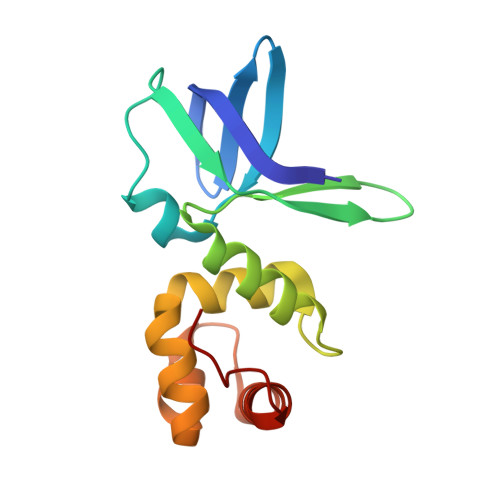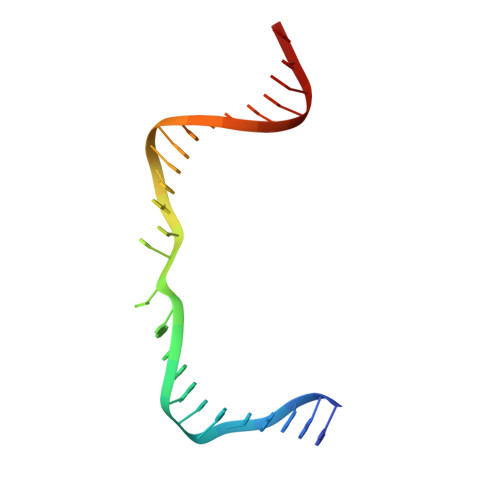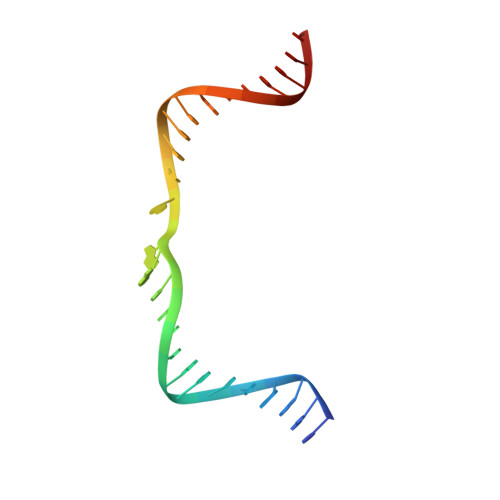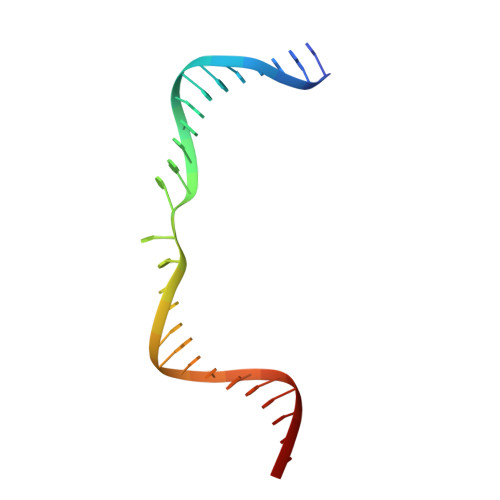Cryo-EM structure of the RuvAB-Holliday junction intermediate complex from Pseudomonas aeruginosa.
Zhang, X., Zhou, Z., Dai, L., Chao, Y., Liu, Z., Huang, M., Qu, Q., Lin, Z.(2023) Front Plant Sci 14: 1139106-1139106
- PubMed: 37025142
- DOI: https://doi.org/10.3389/fpls.2023.1139106
- Primary Citation of Related Structures:
7X5A, 7X5B, 7X7P, 7X7Q - PubMed Abstract:
Holliday junction (HJ) is a four-way structured DNA intermediate in homologous recombination. In bacteria, the HJ-specific binding protein RuvA and the motor protein RuvB together form the RuvAB complex to catalyze HJ branch migration. Pseudomonas aeruginosa ( P. aeruginosa , Pa) is a ubiquitous opportunistic bacterial pathogen that can cause serious infection in a variety of host species, including vertebrate animals, insects and plants. Here, we describe the cryo-Electron Microscopy (cryo-EM) structure of the RuvAB-HJ intermediate complex from P. aeruginosa . The structure shows that two RuvA tetramers sandwich HJ at the junction center and disrupt base pairs at the branch points of RuvB-free HJ arms. Eight RuvB subunits are recruited by the RuvA octameric core and form two open-rings to encircle two opposite HJ arms. Each RuvB subunit individually binds a RuvA domain III. The four RuvB subunits within the ring display distinct subdomain conformations, and two of them engage the central DNA duplex at both strands with their C-terminal β-hairpins. Together with the biochemical analyses, our structure implicates a potential mechanism of RuvB motor assembly onto HJ DNA.
Organizational Affiliation:
College of Chemistry, Fuzhou University, Fuzhou, China.


















